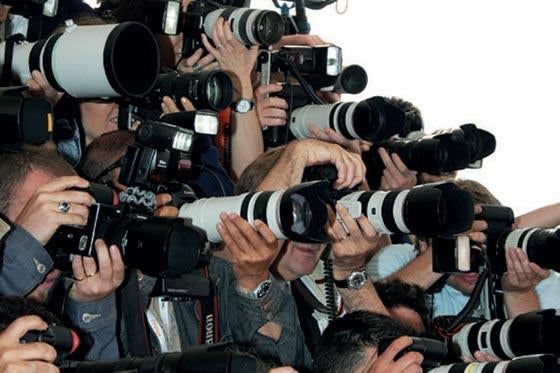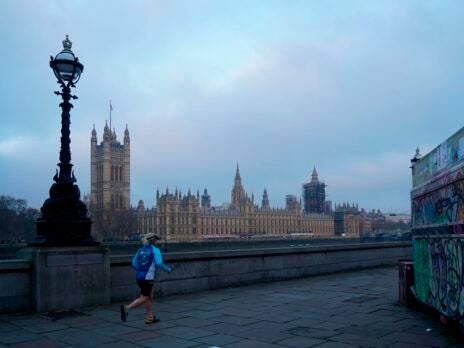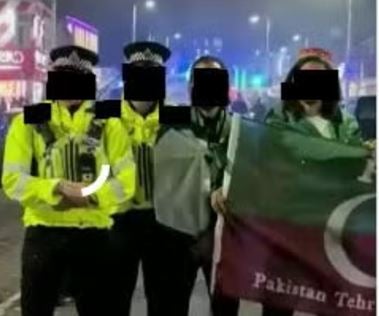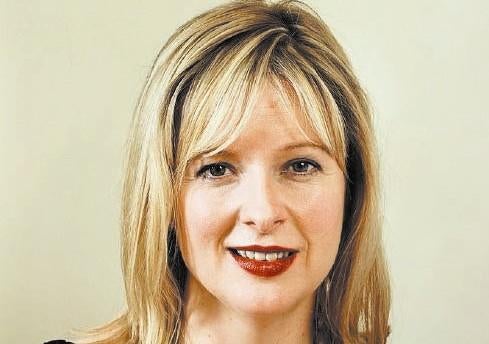
A legal challenge over the power of the police to photograph peaceful protesters succeeded at the Court of Appeal today.
It is a legal decision which could also curb the actions of Met Police Forward Intelligence Teams which regularly photograph journalists covering protests.
Two out of three judges agreed there had been a disproportionate interference in the human right to privacy when police surveillance teams photographed a campaigner and followed him.
The Metropolitan Police was ordered to destroy photographs taken of Andrew Wood, a member of the Campaign Against Arms Trade (CAAT), when he was protesting in London in April 2005.
The order was stayed for a month to allow the force, which must also pay the legal costs, a chance to apply to take the case to the House of Lords.
A spokesman for human rights group Liberty, which backed Wood’s case, said the decision could have implications for future use of photography by the police – a tactic which it said was being used more frequently, particularly when policing protests.
Wood, media co-ordinator for CAAT, was photographed by a Met surveillance unit in April 2005 as he emerged from the Millennium Hotel in London, where he had attended the annual general meeting of Reed Elsevier PLC, parent company of Spearhead Exhibitions Ltd which runs trade fairs for the arms industry.
He gained access to the meeting by lawfully buying a share in the company – he has no criminal convictions and has never been arrested as a result of any campaigning activities.
Wood, who was represented by Liberty, complained that the police took and kept photographs of him and that these actions were unlawful and violated Article 8 – the right to respect for private and family life – under the European Convention on Human Rights.
Mr Justice McCombe dismissed his case in May last year, but today the Court of Appeal allowed his appeal.
Lord Justice Dyson said in his decision today that police were concerned the protest might become a problem and sent 24 officers, plus an intelligence gathering unit, to the event.
Police were ordered to photograph Mr Wood, from Oxford, after they said he was seen talking to known activists with a history of violent protest after the meeting. Mr Wood disputed he had talked to them.
But Lord Justice Dyson said that within a few days the police must have known Mr Wood was of good character and there could no longer be any justification for keeping the photographs.
Taking and keeping the pictures was in pursuit of a legitimate aim, namely the prevention of disorder or crime or protection of others.
Lord Justice Dyson said: “The retention by the police of photographs taken of persons who have not committed an offence, and who are not even suspected of having committed an offence, is always a serious matter.”
“The only justification advanced by the police for retaining the photographs for more than a few days after the meeting was the possibility that the appellant might attend and commit an offence at the Defence Systems and Equipment International fair several months later.
“But in my judgment, even if due allowance is made for the margin of operational discretion, that justification does not bear scrutiny …”
It was for the police to justify their interference with Mr Wood’s rights under the European Convention on Human Rights and “they have failed to do so”.
Lord Collins of Mapesbury, who also allowed the appeal, said: “There was a very substantial police presence. When I first read the papers on this appeal, I was struck by the chilling effect on the exercise of lawful rights such a deployment would have …”
“It is plain that the last word has yet to be said on the implications for civil liberties of the taking and retention of images in the modern surveillance society.
“This is not the case for the exploration of the wider, and very serious, human rights issues which arise when the State obtains and retains the images of persons who have committed no offence and are not suspected of having committed any offence.”
Lord Justice Laws, who dismissed the appeal, said he acknowledged that Mr Wood was of good character, that his link with the targeted protesters was disputed, and that the reason for keeping the photographs was to monitor his conduct at the trade fair scheduled for months later.
“But that was a legitimate aim, in service of which the images were kept,” he said.
“For my part I find it impossible to categorise what was done as outwith the margin of operational discretion which, it must surely be acknowledged, the police possess in such circumstances.”
A Metropolitan Police spokesman said the force welcomed the legal and public scrutiny, and had to held accountable.
He said the Met rigorously defended the case because the tactic of overt photography was “truly valuable” in public order policing and policing in general.
“Overt photography is a valuable intelligence-gathering tool allowing officers to build up a clear picture of who is involved in planning and organising any criminal behaviour or disorder at demonstrations,” he said.
“It provides officers with evidence that can be used post event to arrest and convict for a range of offences.”
Chief Superintendent Ian Thomas, who is responsible for the Met’s public order branch, said: “The Metropolitan Police upholds people’s right to lawful and peaceful demonstration, a right that we strive to fulfil.
“However, we also have to uphold the law. We know that some individuals and groups use the cover of protest to break the law and commit acts of disorder.
“Obviously that is unacceptable. It can endanger legitimate demonstrators and endanger and severely disrupt the public. We are duty bound to prevent that from happening.
“For our policing plan to be the most effective we need to have the fullest possible intelligence picture.
“Overt photography helps us build a picture of who is involved in planning and organising any potential disorder or crime. It may also provide us with evidence that would be beneficial to any legal proceedings.
“There is nothing secretive or covert about the way we do this, and this practice is very well known and understood in protester circles. The Metropolitan Police will continue to do everything necessary to maintain order on London’s streets.
“The findings of this judgment provide a valuable set of guidelines for us to continue to work within and we are pleased that the Court of Appeal has found our use of overt photography to be lawful.”
Email pged@pressgazette.co.uk to point out mistakes, provide story tips or send in a letter for publication on our "Letters Page" blog




